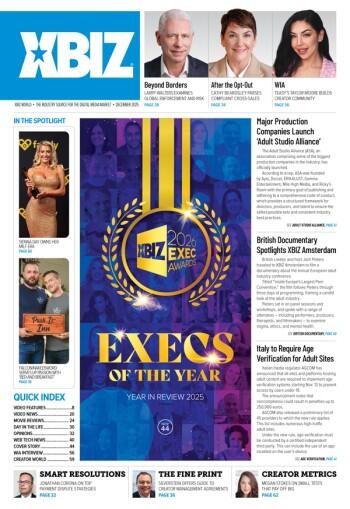I’m a team member. From the moment I get up in the morning to when I go to bed at night I’m part of a team.
There is a lot of talk about leadership. We should be talking about it. It’s important. I just hosted the Vendo Partner Conference and leadership was one of the tracks. But leadership happens in a team. And everyone — without exception — is more often a team member than a leader.
Help your teams outperform by following two rules and starting with one simple tool. Be responsible for your satisfaction. Trust each other. And start meetings discussing a success, risk and a failure.
It’s simple math. Do you lead every team you are on? Nope. As a leader or follower, you are part of a team. So, you are more often a member of a team than a leader.
I’m on a team with the ex-wife and the kids and my new baby and my girlfriend. I’m on lots of teams at work that do projects together. I’m on teams that train together to do painful things with our bodies like marathons.
I can’t escape them.
Sometimes teams work really well. It feels just right. Like when you don’t feel the ambient temperature in a room because it is nearly perfect. It could be a little warmer or a little cooler but it’s good.
Other times teams are too cold. A cold team just doesn’t get started. They don’t do anything. Or they’re too hot. A hot team is in conflict everywhere, all the time. Then they don’t function and everybody knows it.
Over the last year I’ve been thinking a lot about teams that work well and how they get the most out of each member.
And I’ve been gathering data. Vendo is really a data driven company. I also have a friend at Google — we’re in grad school together (another team!) — who is trying to do the same thing. She’s got a lot more data.
Here’s a question we both asked, “What makes teams perform really well?”
She had some ideas that she tested by analyzing her data. Google is full of smart people. Do the best performing teams have the smartest people?
A lot of what Google works on is cutting or even bleeding edge. Did a team stacked with subject matter experts outperform other teams?
Silicon Valley has a well-known diversity problem. Did teams with different backgrounds beat teams of tech bros?
She asked tons of questions. Those are just a few. In each case the data showed a small, positive difference in the direction she had suspected. Yes, it helped to have smarter rather than less smart people. Yes, diverse teams benefitted from a range of ideas and worldviews. Yes, people who know the subject better are more effective than people who have to move up a steep learning curve.
However, none of those things were nearly as important as how the team worked together.
A team that worked well together could be comparatively not so smart, non-expert and look a lot like each other and they could still outperform their peers. How?
The dynamic of the team is more important than the characteristics of the team members.
It seems that teams work best when everybody’s responsible for their own satisfaction and they trust each other.
That means each person is putting a lot of effort into getting what they want as individuals. And it is explicit. Everyone on the team knows what everyone else on the team wants. People are engaged because the team is helping them achieve their personal goals.
Let’s pause for a second. Think of a team you are on. Assemble them in your mind around a table. Maybe there are two of them, maybe five or six. Do you know what each person wants? If you told them, “I think you want X from this project.” Would you be right? Would your answer even be close to right?
What she found is that a team is like the economy in miniature. The idea of capitalism, as laid out by Adam Smith, is that it works because of an invisible hand where everybody goes for what they want and the group benefits.
There’s also something else these high-performing teams do differently. They trust each other more than people in poor to average performing teams. The winners are open to talking about their failures and their problems. That seems like a contradiction.
In this industry, we work with knowledge. It’s just as essential that people share their doubts and their concerns.
These problems have to be accepted by the team. Personally, I don’t like it. My preference is to not have problems. But that is not the way the world works. It doesn’t work that way at Google or at Vendo or on any of my other teams. There are problems. We really have to know how the other people on the team are viewing the problems so we can work together better to create solutions.
How can you build a more effective team?
Over the last year I’ve been working on improving how my teams function.
One of the ways that we do that is right at the start of a meeting. Before we do anything else we begin by creating trust and talking about what we want.
We ask someone to share three things. It’s highly structured. Each person has two minutes to share a success, a failure and a risk that you took. Then there’s one minute for each person to give feedback to the group.
Doing this at the beginning of the meeting creates a different environment for the team. How so? Well, we are all primed to talk about risks, failures and successes. (We were already OK with the success part).
It instantly creates the kind of trust teams need to outperform. It’s a sort of little magic tool for high-performing teams.
It also helps you understand what your team members want. Their successes remind you of their goals. So, do their failures to reach their goals.
There are others tools I’m testing but I’ll leave you with that for now. Try it out. See how it changes your team’s performance.
We all want to be part of great teams. Go for what you want and create an environment of trust. You’ll soon be part of teams that begin to realize their full potential. Instead of a hot team or a cold team that limits potential, be part of a team where 1+1 = 3.
You’re a team member in every part of your life. Help your teams outperform by following two rules and starting with one simple tool. Be responsible for your satisfaction. Trust each other. And start meetings discussing a success, risk and a failure.
Mitch Platt is co-founder of Vendo Services, which uses artificial intelligence to power its billing platform that allows merchants to continuously improve and grow their businesses.







